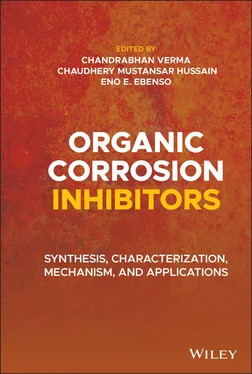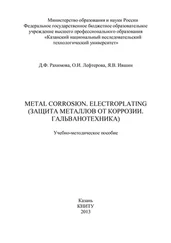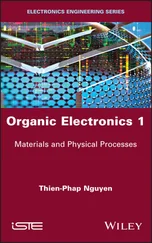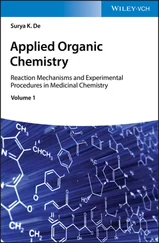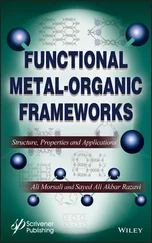The right of Chandrabhan Verma, Chaudhery Mustansar Hussain, and Eno E. Ebenso to be identified as author(s) of the editorial material in this work has been asserted in accordance with law.
Registered Office John Wiley & Sons, Inc., 111 River Street, Hoboken, NJ 07030, USA
Editorial Office 111 River Street, Hoboken, NJ 07030, USA
For details of our global editorial offices, customer services, and more information about Wiley products visit us at www.wiley.com.
Wiley also publishes its books in a variety of electronic formats and by print‐on‐demand. Some content that appears in standard print versions of this book may not be available in other formats.
Limit of Liability/Disclaimer of Warranty In view of ongoing research, equipment modifications, changes in governmental regulations, and the constant flow of information relating to the use of experimental reagents, equipment, and devices, the reader is urged to review and evaluate the information provided in the package insert or instructions for each chemical, piece of equipment, reagent, or device for, among other things, any changes in the instructions or indication of usage and for added warnings and precautions. While the publisher and authors have used their best efforts in preparing this work, they make no representations or warranties with respect to the accuracy or completeness of the contents of this work and specifically disclaim all warranties, including without limitation any implied warranties of merchantability or fitness for a particular purpose. No warranty may be created or extended by sales representatives, written sales materials or promotional statements for this work. The fact that an organization, website, or product is referred to in this work as a citation and/or potential source of further information does not mean that the publisher and authors endorse the information or services the organization, website, or product may provide or recommendations it may make. This work is sold with the understanding that the publisher is not engaged in rendering professional services. The advice and strategies contained herein may not be suitable for your situation. You should consult with a specialist where appropriate. Further, readers should be aware that websites listed in this work may have changed or disappeared between when this work was written and when it is read. Neither the publisher nor authors shall be liable for any loss of profit or any other commercial damages, including but not limited to special, incidental, consequential, or other damages.
Library of Congress Cataloging‐in‐Publication Data
Names: Verma, Chandrabhan, editor. | Hussain, Chaudhery Mustansar, editor. | Ebenso, Eno E., editor.
Title: Organic corrosion inhibitors : synthesis, characterization, mechanism, and applications / edited by Chandrabhan Verma, Chaudhery Mustansar Hussain, Eno E. Ebenso.
Description: First edition. | Hoboken, NJ : Wiley, 2022. | Includes index.
Identifiers: LCCN 2021031915 (print) | LCCN 2021031916 (ebook) | ISBN 9781119794486 (cloth) | ISBN 9781119794493 (adobe pdf) | ISBN 9781119794509 (epub)
Subjects: LCSH: Corrosion and anti‐corrosives. | Corrosion and anti‐corrosives–Environmental aspects.
Classification: LCC TA462 .O65 2022 (print) | LCC TA462 (ebook) | DDC 620.1/1223–dc23
LC record available at https://lccn.loc.gov/2021031915LC ebook record available at https://lccn.loc.gov/2021031916
Cover Design and Image: Wiley
Corrosion is a highly dangerous phenomenon that causes huge economic and safety problems. Various methods of corrosion monitoring, including cathodic protection, panting and coatings, alloying and dealloying (reduction in metal impurities), surface treatments, and use of corrosion inhibitors have been developed depending upon the nature of metal and environment. Application of organic compounds, especially heterocyclic compounds, is one of the most common, practical, easy, and economic methods of corrosion mitigations. Obviously, these compounds become effective by adsorbing on the metallic surface using electron‐rich centers including multiple bonds and polar functional groups. These electron‐rich centers act as adsorption sites during their interaction with the metallic surface. Along with acting as adsorption sites, the polar functional groups such as –OH (hydroxyl), –NH 2(amino), –OMe (methoxy), –COOH (carboxyl), –NO 2(nitro), –CN (nitrile), and so on also enhance solubility of organic compounds in polar electrolytes. Present book describes the collection of major advancements in using organic compounds as corrosion inhibitors including their synthesis, characterization, and corrosion inhibition mechanism.
Through this book it can be seen that use of organic compounds serves as one of the most effective, economic, and ease methods of corrosion monitoring. Using previously developed methods, 15% (US $375) to 35% (US $875) of cost of corrosion can be minimized. Different series of organic compounds, including heterocyclic compounds, are effectively used as corrosion inhibitors for different metals and alloys in various environments. Because of the increasing ecological awareness and strict environmental regulations, various classes of environmental‐friendly alternatives to the traditional toxic corrosion inhibitors have been developed and being implemented. These series of compounds mostly include carbohydrates, natural polymers and amino acids (AAs), and their derivatives. Corrosion scientists and engineers strongly believe that these environmental‐friendly alternatives will be capable to replace, in the near future, the toxic marketable products that are still being used via many worldwide industries.
A book covering the recent developments on using organic compounds as corrosion inhibitors is broadly overdue. It has been addressed by Drs. Verma, Hussain, and Ebenso in this book which attends to fundamental characteristics of organic corrosion inhibitors, their synthesis and characterization, chronological growths, and their industrial applications. The corrosion inhibition using organic compounds, especially heterocyclic compounds, is broad ranging. This book is divided into five sections, where each section contains several chapters. Section 1 “Basics of corrosion and prevention” describes the basic of corrosion, experimental and computational testing of corrosion, and a comparison between organic and inorganic corrosion inhibitors. Section 2 “Heterocyclic and non‐heterocyclic corrosion inhibitors” describes the collection of different series of heterocyclic and non‐heterocyclic corrosion inhibitors such as amines, imidazole, quinoline, pyridine, indole, and their derivatives. This section also includes organic compounds as corrosion inhibitors for oil and gas industries.
Section 3 “Organic green corrosion inhibitors” entirely focuses on green corrosion inhibitors. This section describes the corrosion inhibition characteristics of carbohydrates, amino acids (AAs), oleochemicals, chemical medicines, ionic liquids (ILs), and their derivatives. Section 4 “Organic compounds based nanomaterials as corrosion inhibitors” describes the corrosion inhibition properties of carbon nanotubes (CNTs: SWCNTs and MWCNTs), graphene oxide (GO), and their composites. In the end, Section 5 “Organic polymers as corrosion inhibitors” gives a description on natural and synthetic polymers as corrosion inhibitors.
Overall, this book is written for scholars in academia and industry, working corrosion engineering, materials science students, and applied chemistry. The editors and contributors are well‐known researchers, scientists, and true professionals from academia and industry. On behalf of Wiley, we are very thankful to authors of all chapters for their amazing and passionate efforts in making of this book. Special thanks to Prof. M. A. Quraishi, who guided us continuously in drafting of this book. Special thanks to Michael Leventhal (acquisitions editor) and Katrina Maceda (managing editor) for their dedicated support and help during this project. In the end, all thanks to Wiley for publishing the book.
Читать дальше
